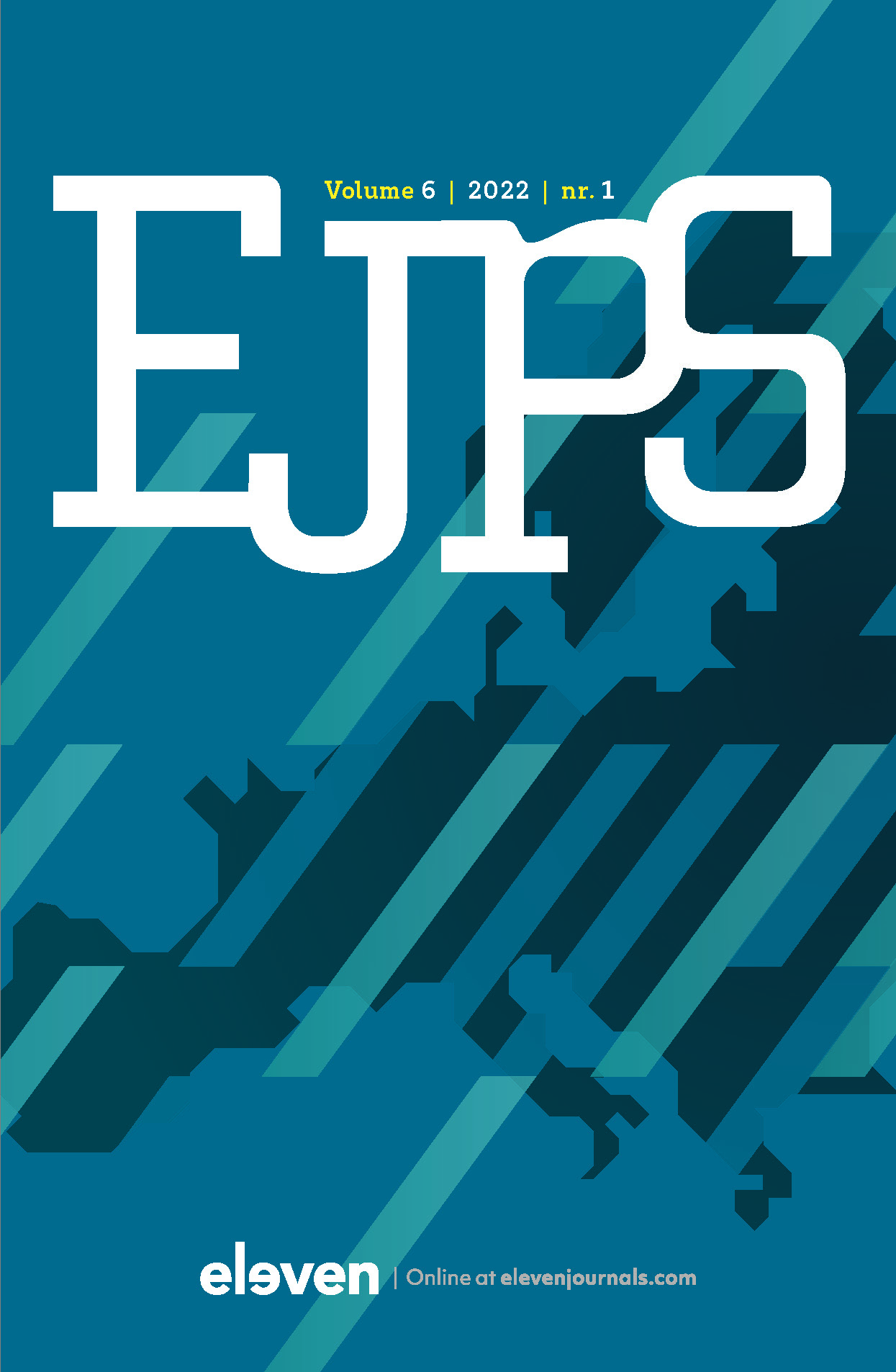|
Intelligence-led policing is a concept of policing that has been applied throughout the world. Despite some encouraging reports, the effect of intelligence-led policing is largely unknown. This paper presents a method with which it is possible to identify intelligence-led policing’s potential to increase the effectiveness of policing. The method is based on modelling with system dynamics and takes into account the complexities of intelligence-led policing. For evaluation purposes, this method has been applied using a case study in the Netherlands. The case study shows that collaboratively constructing the system dynamics model provides a more structured insight into the effects of intelligence-led policing. With system dynamics it is possible to support the ‘good stories’ of intelligence-led policing with argumentation explaining the mechanisms in which intelligence-led policing potentially improves effectiveness. |


European Journal of Policing Studies
About this journalSubscribe to the email alerts for this journal here to receive notifications when a new issue is at your disposal.
| Article |
Introduction |
| Authors | Antoinette Verhage, Lieselot Bisschop and Wim Hardyns |
| Article |
Modelling intelligence-led policing to identify its potential |
| Keywords | System dynamics, collaboration, intelligence, police, intelligence-led policing |
| Authors | Mariëlle den Hengst-Bruggeling, Bart de Graaf and Peter van Scheepstal |
| AbstractAuthor's information |
| Article |
Physical fitness and anthropometric characteristics of graduating Norwegian Police University College students |
| Keywords | Physical test performance, physical health, police officers, work ability |
| Authors | Thomas Dillern, Ole Ragnar Norheim Jenssen and Jørgen Ingebrigtsen |
| AbstractAuthor's information |
|
The aim of the study was to assess physical fitness and anthropometric characteristics of Norwegian male and female graduating police university college students. Several fitness tests (i.e. upper body strength, explosive leg power and endurance capacity) were conducted and anthropometric data (i.e. body mass and stature) were collected. Compared with relevant reference groups, the present students perform well on physical fitness tests. Moreover, this study provides a better understanding of some of the properties forthcoming police officers obtain, and the present findings could be valuable if one aims to further investigate the development of physical fitness throughout police careers. |
| Article |
The importance of relating theory and practice when teaching police students |
| Keywords | Police students, Police theory, Police practice, Police teaching, Engagement |
| Authors | Pål Lagestad |
| AbstractAuthor's information |
|
The general trend of scientific and academic professionalization of practical professions, challenges practical professions all over the world. On the basis of interviews and surveys among police students, this study examines what police students experience to be good teaching at the Police University College. In accordance with Dewey (1916), the results clearly demonstrate the importance of relating theory to police practice in social science. For this reason, it is suggested that obligatory participation in police patrols and other police work should be a requirement for teachers in social science at the Police University College. Surprisingly, the students pointed to engagement and to relate theory to practice as important skills of a teacher as knowledge of the subject, to be prepared for lessons and pedagogical skills. Engagement and to relate theory to practice may also be important characteristic of good teaching at other universities with education related to practical professions, such as nursing and teaching. |
| Article |
Surrounded by SafetySafety as an encompassing policy concept in the Netherlands |
| Keywords | Integrated safety policy, Local safety policy, Safety concept |
| Authors | Sandra L. Resodihardjo and Ruth Prins |
| AbstractAuthor's information |
|
Safety used to be a pretty straightforward concept: governments need to safeguard the country from invasion and its citizens from crime. Over time, additional issues became to be defined as a safety problem. Even so, the safety problems and their accompanying policies remained clearly demarcated – safety revolved, for example, around product safety. Recently, an encompassing safety concept has become popular in the Netherlands. No longer referring to a clearly demarcated policy issue, the concept and its related integrated safety policy covers everything from fighting crime to making sure that street lights work. In this article, we show how safety in general has become firmly embedded on the Dutch government agenda over time and explain what integrated safety policy entails. |

